Opus #2 – The Magic of Music
Opus #2 is the flagship DAP from Opus, a growing company from Korea, known for having brought us some of the best DAPs in the world, like Opus #3 and Opus #1.
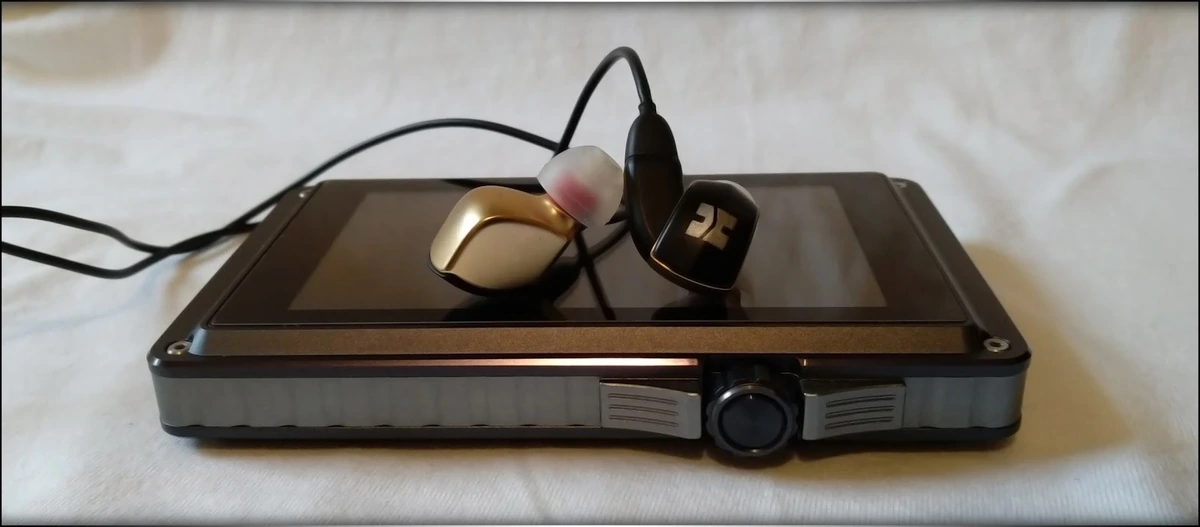
Introduction
Opus DAPs (Digital Audio Players) are some of the best-known Audiophile products around, being famous for their excellent musical and revealing abilities, along with exquisite designs and excellent support. Opus are known to employ some of the most strict quality control procedures in their production lines, leading to long-lasting and reliable products and purchases.
It should be noted that I have absolutely no affiliation with TheBit, Opus or MusicTeck, I am not receiving any incentive for this review or to sweeten things out. This review is not sponsored nor has been paid for by TheBit, Opus or any other company. I’d like to thank Jongwon from Opus for providing the sample for the review. The sample was provided along with Opus’s request for an honest and unbiased review. This review will be as objective as it is humanly possible, and it reflects my personal experience with Opus #2. Every opinion expressed is mine and I stand by it, the purpose of this review is to help those interested in Opus #2 find their next music companion.
Product Link
You can purchase Opus #2 from www.amazon.com here: https://www.amazon.com/OPUS-Hi-Res-Portable-Digital-Player/dp/B01LZW5RGF
First Impression
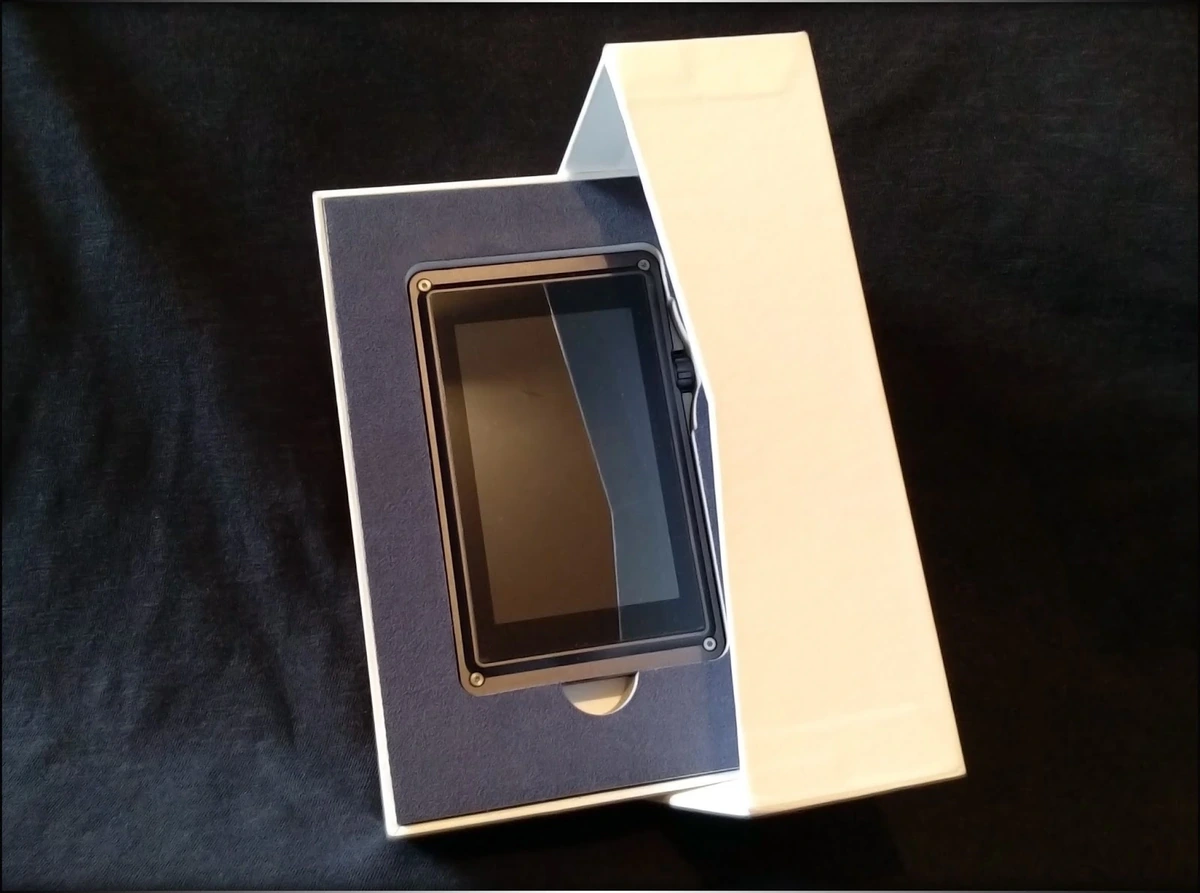
It was a beautiful late Autumn day when I received Opus #2. It was already noon when the curier gave me a call and woke me from my deep slumber. It was one of those days when I was back, visiting my hometown of Campulung, a small and traditional-looking town in the Carpathian mountains of Romania.
The courier arrived in about ten minutes from the moment he called, so I barely had enough time to wash my face and change into street clothes. The package was handled with a smile, then the man went on his way to deliver more stories and presents to people who were waiting for him.
I quickly rushed back to my room, ready to unravel the magic of Opus’s flagship.
To my amazement, Opus #2 was packaged quite differently from Opus #3, this time being seated in a fully white box, everything besides the device being presented as white and immaculate. It was easy to tell that this was a very well-made high-end DAP from the construction quality and from the materials used in the box, down to the feeling of opening it. #2 comes bundled together with a genuine leather case, cables, and an extra screen protector.
I charged it a bit, then I plugged in my microSD card and started to listen to the first song that came to my mind – Arctic Monkeys – R U Mine?. After the first few seconds, I was stunned by the amazing amount of detail and by the sweetness of the guitars. The way Opus #2 presents music with a a lot of emotion and in a very organic manner left me searching for more, as I really wanted to rediscover the magic and naturalness of every single song I’ve been listening to for years now. I closed my eyes, sat down, then let my mind drift away in a heaven of musicality and emotion, guided by the magic provided by Opus#2.
I couldn’t stop from listening for the next few hours, dazzled by the sweetness of this DAP.
Packaging
First things first, let’s get the packaging out of the way:
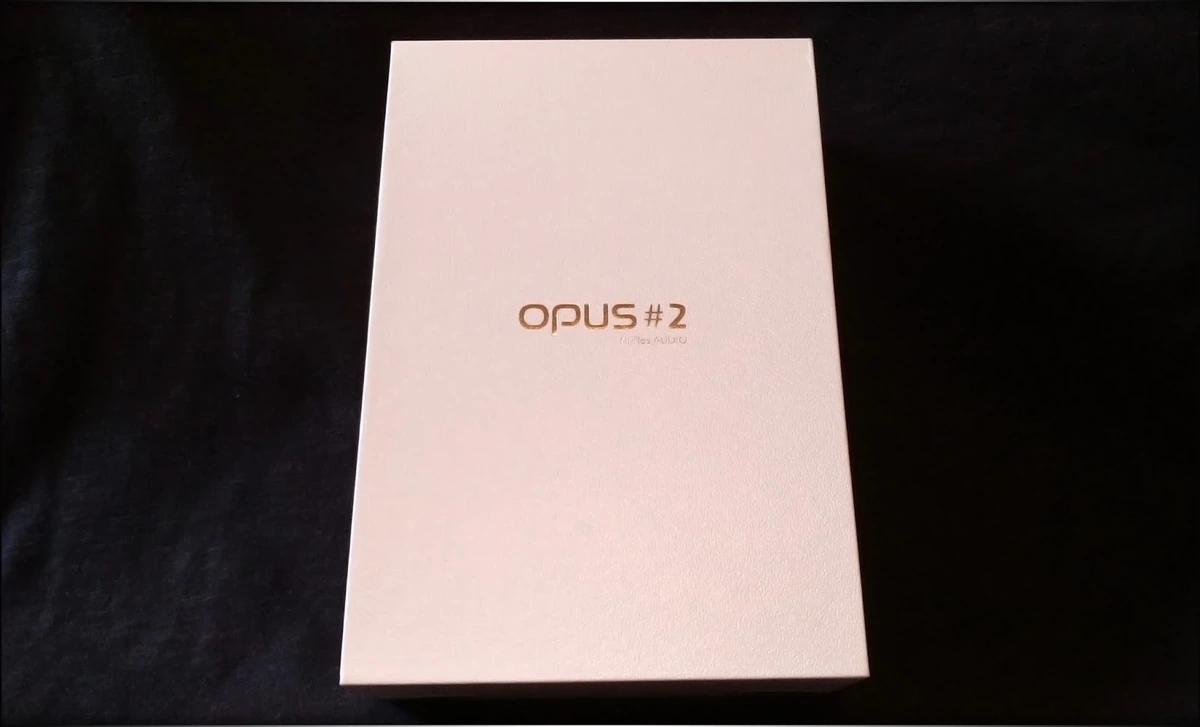
Opus decided to go all-out when it comes to their packaging, and dressed #2 in a white package, with everything looking quite elegant and High-End. The unboxing experience is as amazing as it gets for a high end device, but Opus didn’t try to make the box as large as possible, but instead they went with a package that keeps everything together in a tidy place, while still looking sleek and elegant. The golden writing on the outside, along with the fine textures really make the unboxing experience of #2 intricate and impressive.
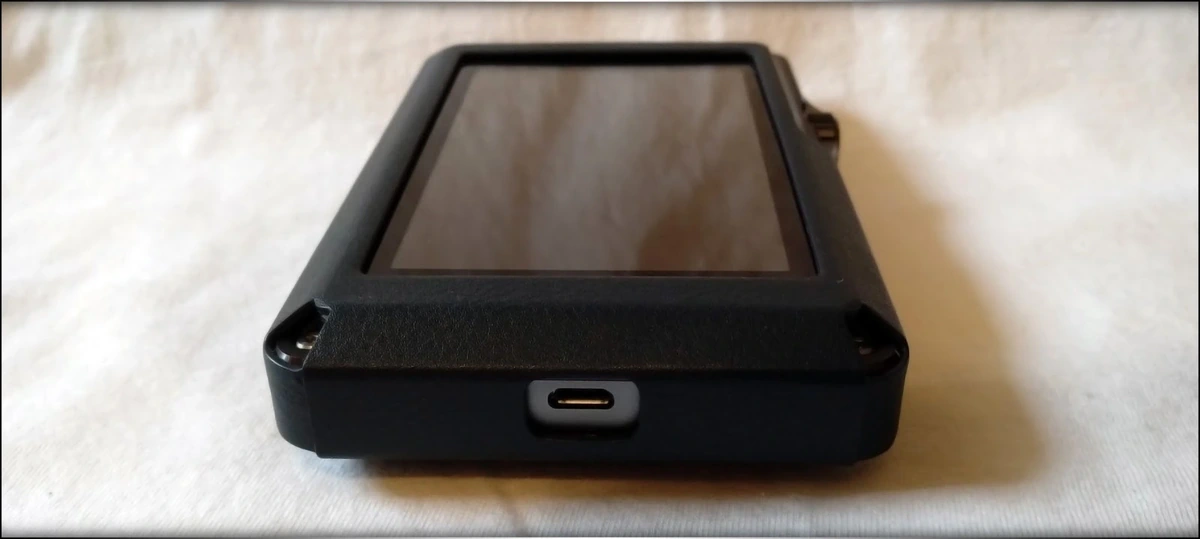
You can find a whole lot of extras in the box, starting with the genuine leather case, which fits #2 perfectly, the manuals and books on #2, and the Audiophile Grade USB cable for using #2 as an external DAC. There is an extra screen protector in the box, with one applied on #2 from the factory, and it does a great job at protecting the screen, as I’ve noticed after using it for a while.
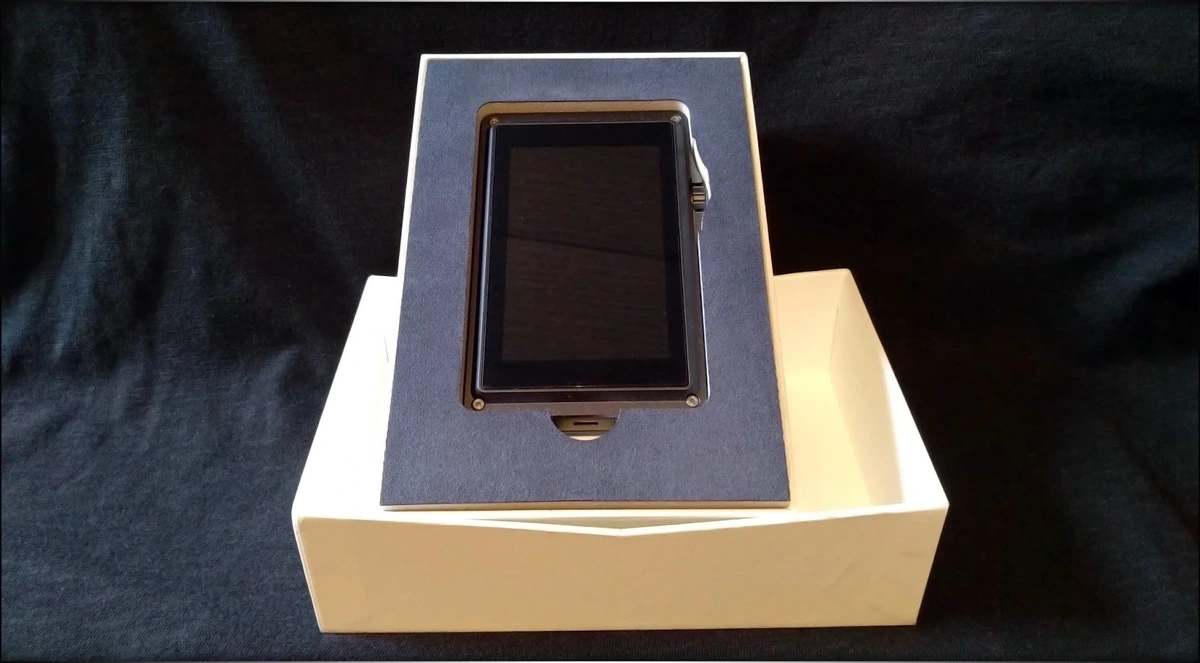
As #2 is seated in a foam cutout, you can notice from the first moment of owning it that Opus provides and immaculate experience for their customers, with a pearly white package etched with golden writing, a beautifully designed device, along with high quality extras hidden in the box.
Technical Specifications
DAC – Dual ESS9018KM Chips
Perfect Bit Playback – Yes
Max Decoding – 32bit / 384kHz
USB DAC – Yes, Dedicated Tesycon Driver
Display – 4.0″ IPS (800 x 480) IPS Panel
RAM – 1 GB DDR3
CPU – Quad Core, ARM Cortex A9
Internal Memory – 128 GB
Wifi – 2.4 GHz
Bluetooth – 4.0
Battery – 4000 mAh, 3.7V Li-Polymer
Balanced Output – Yes, 2.5mm
SE Output – Yes, 3.5mm
Weight – 252g
Dimensions – 76 mm x 124 mm x 18.3 mm
Body Material – Full Metal Body, Aluminium
Output Level – 2.3V RMS SE, 2.5V RMS, Balanced
Clock Source – 50ps
Optical Out – Yes
USB – MicroUSB
Build Quality/Aesthetics/UI/Firmware
By now I have seen, bought, and owned quite a few Audiophile Devices, but every time I see another high-end device, it reminds me that even after seeing a lot of awesome devices, one can still be impressed.
Starting with the outer appearance, Opus #2 looks like a device taken from another dimension. It skillfully combines an elegant outline, with a glass plate in the back, smooth lines in the front, gentle yet precise slopes that raise the display, and a snazzy volume wheel, with four industrial-looking screws, one in each corner, giving #2 a unqiue appearance.
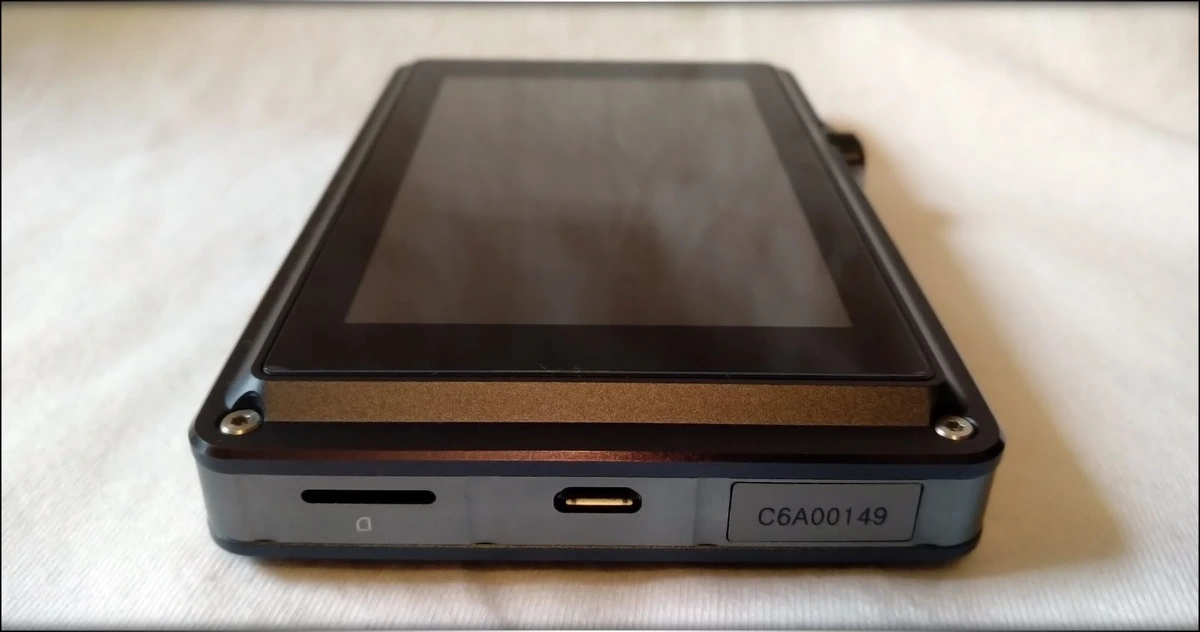
The display is an IPS panel with amazing viewing angles, great brightness, and vivid colors, providing both good outdoors usage and a nice touch for those who love to admire the album art of their favorite bands. The screen also has good resolution, looking quite sharp to my eyes.
The volume wheel is guarded by two metal wings that make sure you can’t damage it while using #2 in your pocket or in your backpack. The volume wheel is clicky, and you have a clear definition of how many volume steps you’re adding or subtracting from the tactile and audible click feedback. Although it has a little play between two clicks, it never turned by itself while in my pocket, and it seems that this design is one of the best there are. Opus #2 is also one of the few devices where you can change the volume while using its screen, without any other tricks. This means that if you want to adjust the volume by a large margin, you can do this with one simple swipe.
There are 3 playback control buttons on the left side, all of them round, spaced well enough from each other, and clicky, providing excellent blind control for Opus #2, even while it is dressed in its leather case.
The microUSB port can be found on the bottom, along with the mSD card tray, which supports up to 200 GB mSD cards officially, but which was proven to work flawlessly with 400GB mSD cards as well. You can find the 3.5 Headphone Out / Line Out on the top, along with the power button, and the 2.5mm Balanced Out.
When it comes to its usability, #2 sits comfortably in one hand, you can use and access everything if using it one-handed, including changing song, changing volume, and everything else. The metal ridges on the sides help a lot with its stability and with its grip, while the screen has a very good size for music control.
On the inside, the Dual ESS Dac Chips do a great job, and they take full advantage of their Dual DAC configuration, offering a configuration where each DAC processes each channel. The AMP is quite strong, and you have a fairly good voltage swing from both the SE and the BAL outputs, of about 2.3 and 2.5 Volts. The battery inside #2 is quite huge as well, rated at 4000mAh, being one of the largest batteries in a DAP to date. Charging it takes around four hours and its battery life can reach ten hours of usage at lower volumes and with lower screen brightness, or around eight-nine hours with max brightness, WiFi turned on, and with moderate screen activity. I’ve been using it far more at very high volumes, with the brightness maxed out, and it was still able to pull a good eight – nine hours on every charge, being a real champ when it comes to its battery.
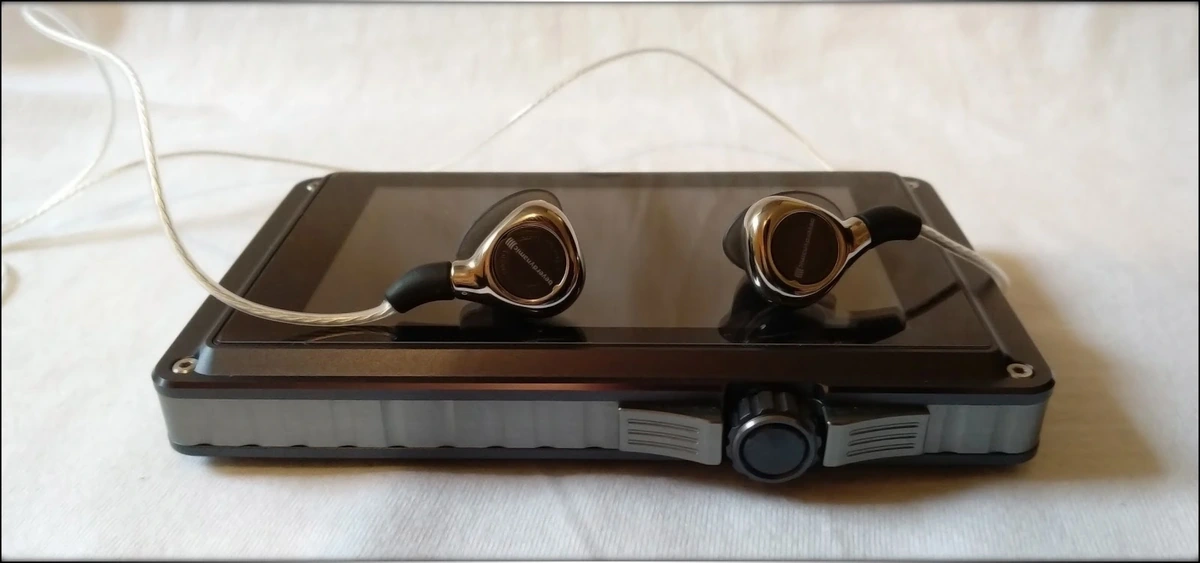
The firmware is based on Android, and while i is a deeply customized version of Android, it still works out greatly, providing both an amazing level of sound, but also features like streaming. Tested with my typical usage patterns, the firmware works out quite nicely, the UI is quite intuitive, and Opus #2 has all the bells and whistles you can hope for, including gapless playback, Playlist support and even Streaming services support, although the last one might be a bit trickier to set up.
You have all the power of Android, but with TheBit’s Optimizations, leading to an excellent sonic representation, with a lot of power. To use another music app than the default one, you must sideload it, from Settings -> Streaming, but other than that, it seems to work flawlessly. One thing that should be noted is that while #2 uses the same jack for their LO and HO outputs, and while the LO option seems to set the volume at 100%, after a few experiments, it seems that the option actually activates a different circuit setup which makes the DAP a very good DAC to use for feeding your AMP.
All in all, the device looks and feels elegant, and with the beautiful leather case included, it really makes up for one of the best DAP devices there are.
Sound Quality
As a few revieers mentioned this before, describing the Sonic Signature of a DAP (Digital Audio Player) can be fairly complicated, as the ideal source should sound transparent and it should leave the coloring for the IEMs and Headphones. This being said, every single DAP out there will change the sound in some way with every headphone and IEM, some people naming this “Headphone – DAP Synergy”.
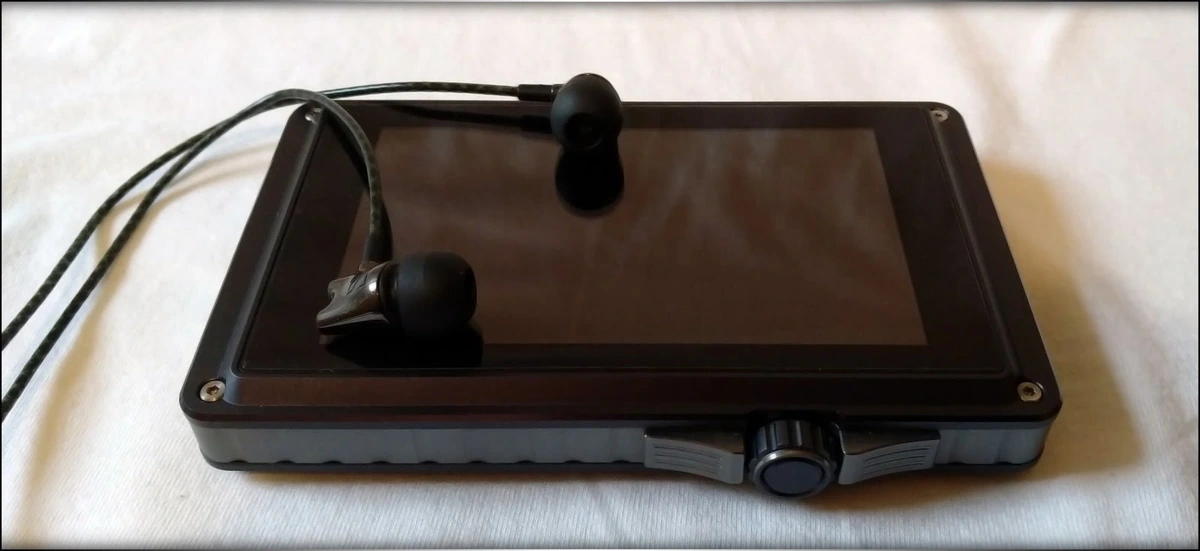
Opus #2 has a balanced signature, with a neutral sound, a full body, and a very nice, rounded, organic and natural tonality. The sound is always very nicely layered, the bass is always very quick and has great impact, while the transient response is excellent. Although it has a full body sound, Opus #2 also presents all detail with an excellent edge, providing a great example of a DAP that can be both full-sounding and extremely detailed at the same time, even without going into the territory of bright and analytical signatures.
Although #2 relies on an ESS DAC, the “ESS Glare” is clearly replaced by a sweet, smooth and organic signature.
Bass
The bottom end of #2 is a very agile and tasty one, with a lot of punch and deep bass when it is called for, along with an excellent speed and a good texture representation. Bass guitars feel deep, full bodied, and satisfying.
Midrange
2 has a magical way of presenting the midrange with excellent detail, naturalness and richness leading to a very organic and tasty sound. The Guitars have excellent representation of their textures and musical notes, voices feel natural and tangible, and background instruments always feel vivid and well-presented. An excellent instrument separation coupled with a large soundstage lead to a very realistic experience that sends the listener on a trip through the music they are listening. The dynamics are also top notch, #2 having a good amount of dynamic range for those who want to hear the fine nuances in their music.
Treble
#2 has a very well-extended top end, reaching the highest registers with ease, and extending even beyond, but without being fatiguing or having any kind of glare, the treble being in line with the rest of the signature, organic, natural and well-detailed. Cymbal crashes last for the ideal amount of time, while trumpets bear a very good impression.
Soundstage
The soundstage of #2 extends very well in all directions, being excellent on both the SE and the Bal outputs. The instrument separation is also quite excellent, revealing background instruments and quieter instruments in a complex arrangement quite well. Even so, #2 is never analytical, being organic in its presentation, and revealing everything without separating things from each other.
ADSR/PRaT
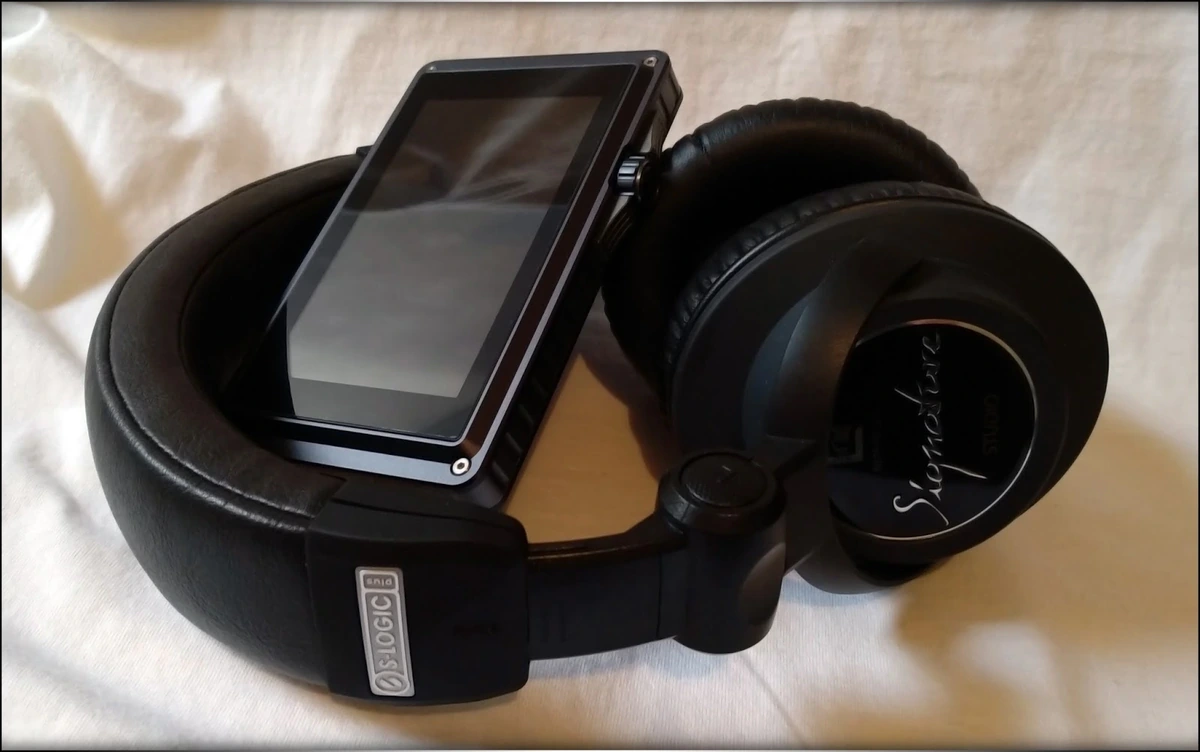
The ADSR and PRaT (Attack, Decay, Sustain, Release, and Pace Rhythm and Timing) characteristics of Opus #2 are very impressive, as it is extremely precise, but natural at the same time. Things have excellent dynamics and textures, each musical note being very well-defined. The resolving abilities of Opus #2 are worthy of a summit-fi DAP, as it provides a good introspection into the depth of every song it plays.
Portable Usage
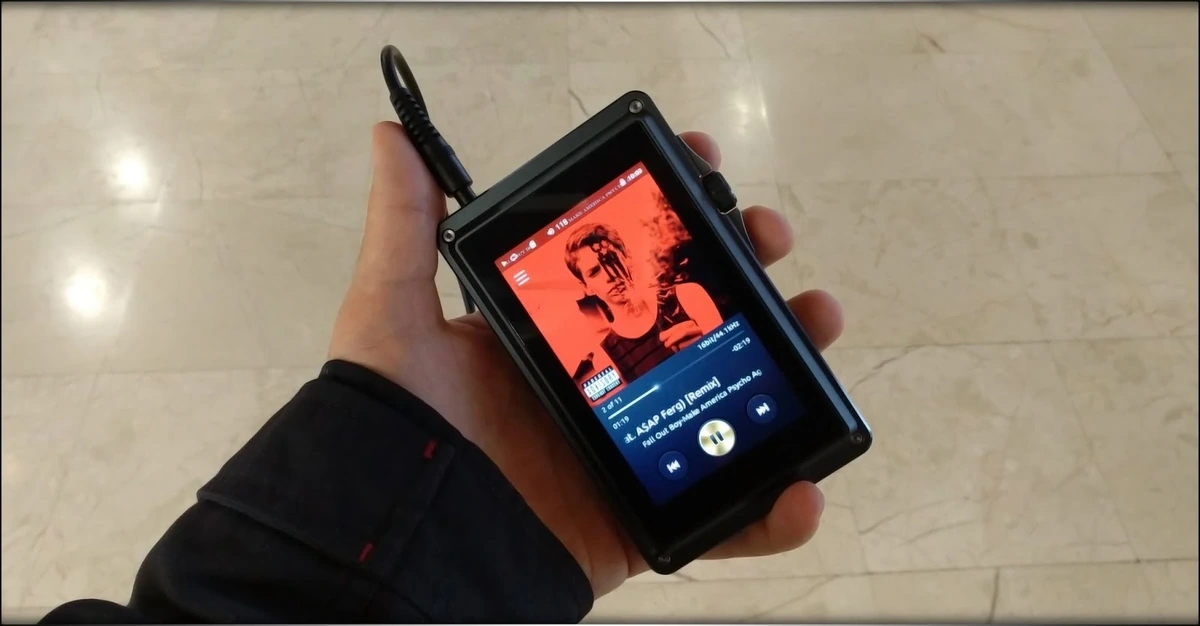
Opus #2 is quite portable, and although it is one of the larger DAPs I had, it still is smaller than my smartphone (Xiaomi Mi Max 2), and it is easy to hold and use with just one hand. The firmware is rock-stable and it is possible to use it for up to ten hours from one battery charge. Opus #2 can get warm, but not overly so, being possible to use it in both Summer and Winter with no issues. Since both audio output ports are on the top, I tend to place it bottom-first in my pocket or side-bag, so I usually pull it straight for usage. The volume wheel and the buttons can be used while it is in a pocket, and the whole GUI makes an excellent usage while on-the-go.
Although Opus #2 is designed as a summit-fi DAP with a lot of power and an amazing sound, it can do far more than that, being able to provide a Line-Out Signal to an external AMP, and even having Bluetooth and Wifi abilities.
All in all, Opus #2 provides usage in all my typical scenarios, being one of the best DAPs I used portably.
Select Pairings
Please note that for any pairing, the IEM has more impact on the final result than the DAP, the best DAP being one that is as transparent as possible – #2 being quite good at this.
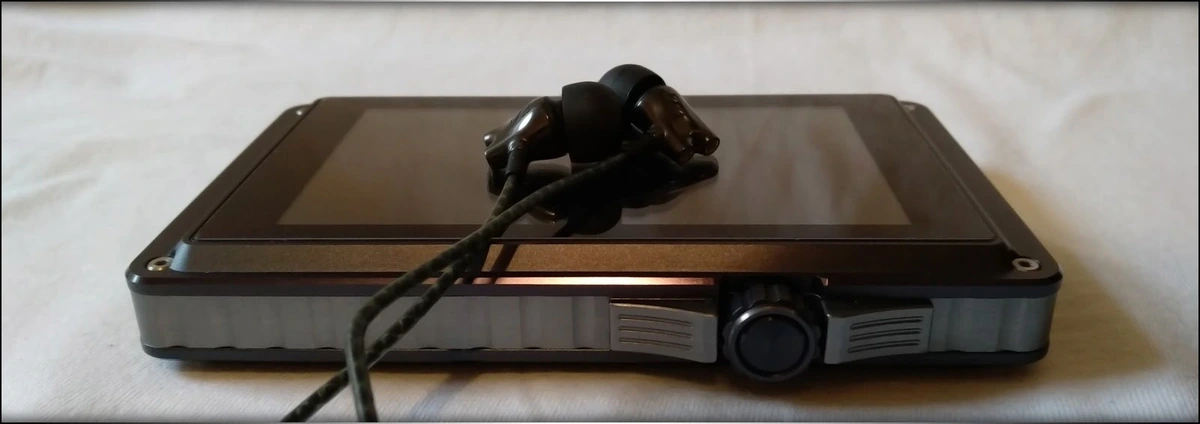
Opus #2 + Dunu DK-3001 – #2 provides an excellent driving source for DK-3001, with no apparent hiss, and with an excellent amount of details, featuring a warm and full sound. Dk-3001 presents its typical clear and relaxed sound, all while gaining a little edge on musicality and instrument separation. The soundstage size is quite good with this pairing, and the whole sound is quite natural and enjoyable.
Opus #2 + FiiO F9 – By now F9 are quite well-known for their comfort and excellent price-performance ratio. Opus #2 makes them sing quite nicely, with a strong bass, a sweet, slightly recessed midrange, and an energetic and slightly bright top end. The instrument separation and musicality are excellent with Opus #2 driving F9.
Opus #2 + FiiO F9 Pro – F9Pro is the bigger brother of F9, providing a similar result as F9, but with considerably better instrument separation, resolution, detail level and soundstage width. The midrange also sounds a tad sweeter on the F9Pro than on F9 while driven by #2.
Opus #2 + Unique Melody Martian – UM Martian is quite a precise and clear IEM with a tight bottom end, a clear and very detailed midrange, and a bright and energetic top end. Opus #2 helps them sound fuller and makes their bass a little more natural, while it gives them an edge in musicality and instrument separation.
Opus #2 + Sennheiser ie800 – ie800’s original character is sweetened a bit, their midrange becoming even more vivid, and their top end becoming a bit more detailed as well. The mighty bass of ie800 stays impactful, full and deep, while their instrument separation is as excellent as always.
Opus #2 + HIFIMAN RE2000 – Being a Summit-fi IEM, RE2000 is given proper driving power by a summit-fi DAP like Opus #2, as it helps them sound their best in dynamics, details and soundstage size and precision. Instrument separation is quite excellent, and the bass is natural, slightly thick, the midrange is natural and very detailed, while the top end is bright, energetic, and very detailed.
Opus #2 + HIFIMAN RE800 – RE800 is another Great IEM to own alongside Opus #2 as it is a magical IEM when it comes to acoustic music. #2 enhances RE800’s musicality and their tendency to have a sweet and dynamic sound, providing them with an excellent instrument separation and a very natural tone in the midrange.
Opus #2 + Beyerdynamic Xelento – Being quite the Romantic IEM, Xelento is helped a lot by Opus #2 to gain an edge in realism and naturalness, their signature not being changed, but their instrument separation and their soundstage becoming better, providing an even more romantic experience.
Opus #2 + Ultrasone Signature Studio – Although Signature Studio is fairly hard to drive, Opus #2 proves to be not only fit for the job, but it is clear that it could drive even harder-to-drive headphones just as well. The bottom end is tight, deep and has a great speed, the midrange is slightly recessed, but very wide, with excellent instrument separation, while the top end is bright, but without being harsh, splashy or sibilant, the pairing having a very open-sounding signature.
Opus #2 + Meze 99 Classics – Meze 99Classics is skillfully driven by the magic of #2, as they sound impactful, with a thick and satisfying bass, a natural and open-sounding midrange, and a natural and tender treble.
Opus #2 + iBasso IT01 – IT01 is quite skillfully driven by Opus #2, and although it is not an expensive IEM, IT01 surely sounds like one, being very well-detailed, with a natural and open sound, an enhanced bottom end, and a smooth treble, leading to a romantic and fun signature to which you could listen to for hours.
Opus #2 + MO MZero – MOOH BE00BT are a very classy headphone that’s priced just a little above 100$, but which provides sound worthy of a much higher price range. They have a very strong and enhanced bottom end, a lively, well separated, and wide midrange, and a smooth top end. The sound is clearly better when #2 drives them as a DAP rather than through a Bluetooth connection, #2 showing its impressive abilities as a summit-fi DAP, with an excellent DAC and AMP setup.
Comparisons
Most comparisons have been taken with RE2000, Signature Studio, RE800, ie800, and DK-3001. Hiss is usually very hard to notice and I tend to not notice it at all, but I tried my best to compare how DAPs perform relative to each other in this aspect, as well as other aspects that might come off as relevant.
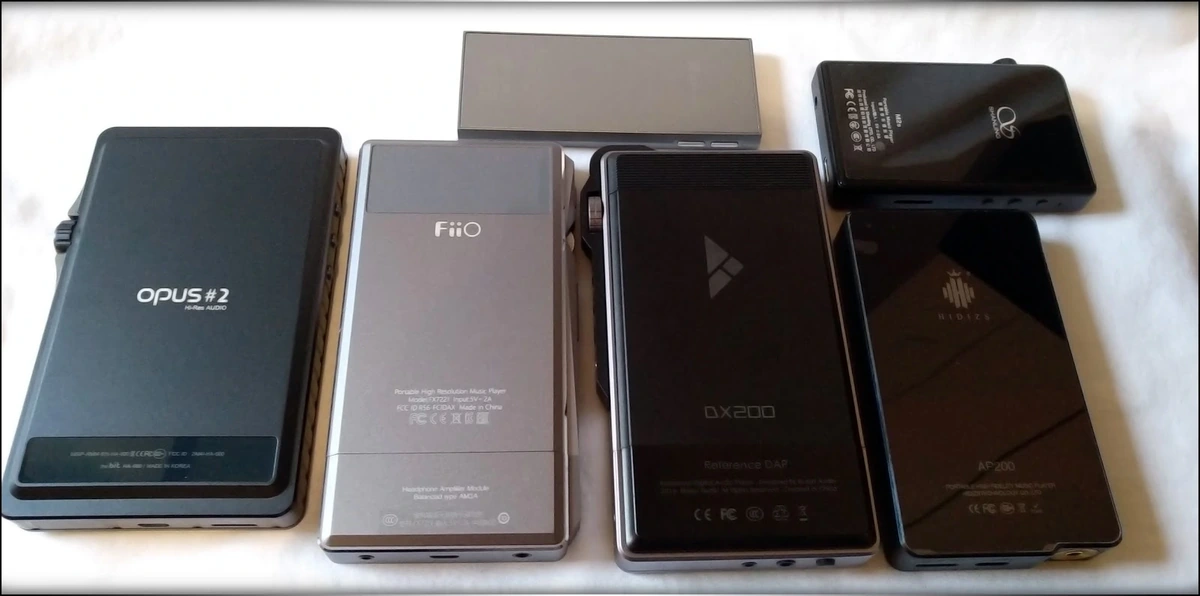
Opus #2 vs iFi Micro iDSD BL – Two quite different devices, #2 being a standalone DAP, while iDSD is an high-end portable DAC/AMP. In sound, both present music with excellent soundstage expansion. #2 and iDSD BL are similarly organic and have a similar amount of warmth, while the soundstage is presented deeper on iDSD BL, while it has a wider feeling to it on #2. Even when placed against iDSD BL, #2 is able to hold its ground and provide an excellent sound that makes you understand how far the summit-fi DAPs have came. iDSD BL can drive headphones that are more power-hungry, up to the mighty HD800S, while #2 tends to work excellently with anything up to HD600.
Opus#2 vs iBasso DX200 – Opus #2 is the Top Of The Line DAP from Opus, while DX200 is the Top Of The Line DAP from iBasso. They have similar abilities, but rely on slightly different firmware and hardware. Opus #2 is an all-in-one solution, while DX200 has interchangeable AMP cards. When it comes to their sound, the soundstage is similar in width and depth. The sound signature is fairly similar as well, with Opus#2 being a bit smoother, musical, and a touch less transparent while DX200 holds an edge in transparency and resolution. #2 tends to be a tad more organic in the long run, but they are pretty similar devices.
#2 vs X7 w/AM03A – The Flagship devices from FiiO and Opus! Starting with their abilities, X7mkii has interchangeable AMP modules, just like DX200, while Opus #2 is a standalone DAP which provides best experience by itself. When it comes to their sound, the overall tonality is fairly similar, both being neutral and transparent, with good warmth and body, and a natural timbre. #2 tends to sound a tad more organic, while by comparison X7mkii can be a bit more analytical and provide a tad more detail, but X7mkii never sounds like an analytical device either, so both can be considered quite natural-sounding devices.
Value and Conclusion
Opus #2 is currently selling for about 1300$, its price placing it in the summit-fi category of DAPs. Opus #2 comes presented in an immaculate white box, along with an excellent set of accessories, a beautiful leather cover, a very good USB cable (which helps it act as a USB DAC), extra screen protectors, and #2 itself. With an excellent set of internal components, #2 sounds very good for its price, being able to compete fairly well with its direct competitors, DX200, and X7mkii.
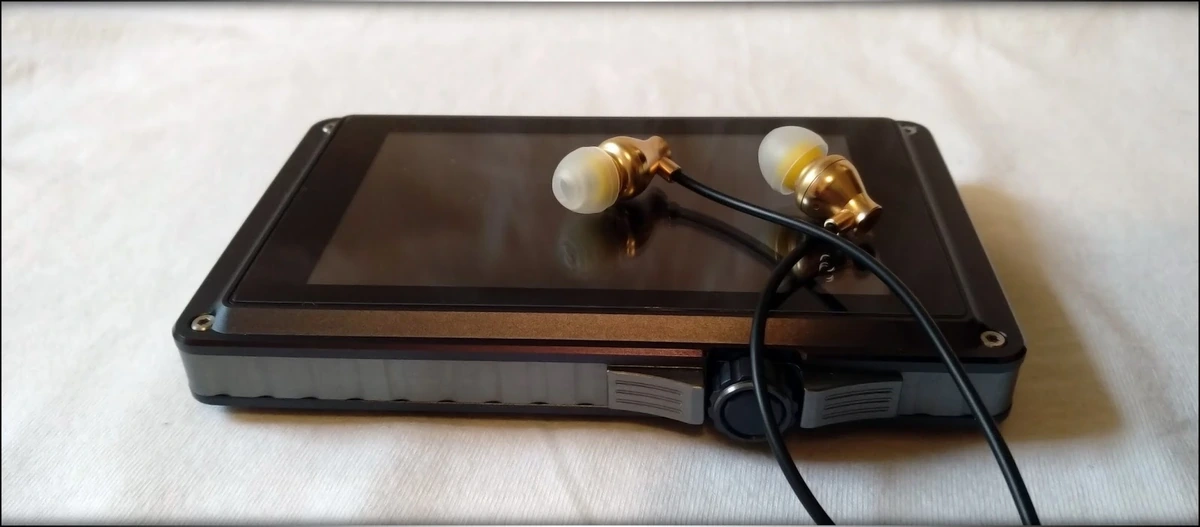
Instead of focusing on the absolute analytical ability, #2 focuses on how musical and organic it can sound, providing a full-bodied signature, a very wide and deep soundstage, an excellent instrument separation, and a natural, balanced and slightly smooth signature that can be listened for hours in a row and which can still provide an excellent experience for the listener.
All in all, #2 is one of the best DAPs in the world at this hour, and it most certainly looks and acts like it. With an excellent build quality, a high-quality display with excellent resolution and image quality, a good leather case included in the package, and with its excellent sound, #2 makes an excellent entrance for Opus and TheBit in the Summit-Fi area of Audiophile-Grade Digital Audio Players.
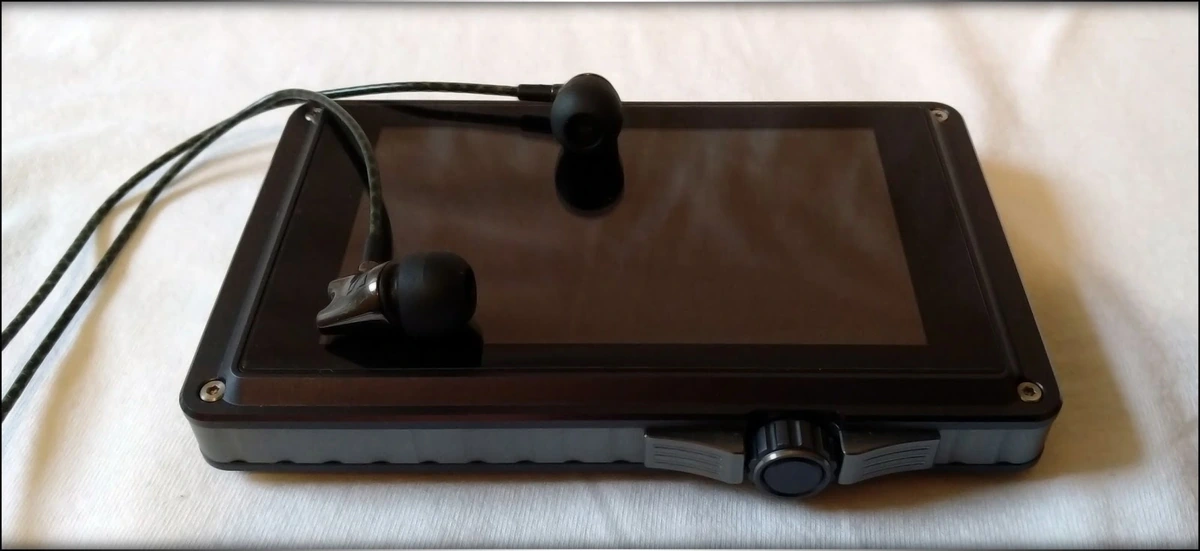
If you’re looking for a very organic sound, or for a DAP that can steal the eyes of everybody once you enter a room, or even if you’re merely looking for one of the highest quality DAPs, Opus #2 can surely be one of the best answers to your search, a really sweet DAP to be your companion
Check Out Opus and other DAPs on www.amazon.com : https://amzn.to/3mTh6y8
Product Link
You can purchase Opus #2 from www.amazon.com here: https://www.amazon.com/OPUS-Hi-Res-Portable-Digital-Player/dp/B01LZW5RGF
--- Please remember to stay safe, and always have fun while listening to music!---
- If you have a dime to spare, please donate, and help us! It would make the day brighter for me and my wife-
Full Playlist used for this review
We listened to more songs than those named in this playlist, but those are excellent for identifying a sonic signature. I recommend trying most of the songs from this playlist, especially if you’re searching for new music! The playlists are different for Spotify, Tidal and Youtube, and based on the songs I enjoy and are available on each!
https://www.youtube.com/playlist?list=PL_cjBXGmwSHSdGcwuc_bKbBDGHL4QvYBu
https://open.spotify.com/playlist/5J3oloz8Riy9LxEGenOjQ0?si=979ba4f082414be7
https://tidal.com/browse/playlist/330fd544-8e5b-4839-bd35-676b2edbb3d5
--- Contact Us ---






[…] X7mkii vs Opus #2 – We reviewed Opus #2 here: https://audiophile-heaven.com/2018/01/opus-2-magic-of-music.html Opus #2 is quite a bit more expensive than X7mkii, but the comparison feels fair since both are the […]